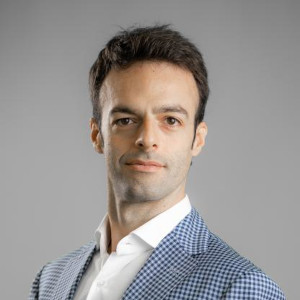Collection
Advances and Challenges in Photocatalytic Gas Conversion
- Submission status
- Open
- Open for submission from
- 27 October 2023
- Submission deadline
- 31 May 2024
Gas photoconversion, a fascinating and evolving field at the intersection of chemistry, physics, and environmental science, involves the utilization of light energy—typically sourced from solar sources—to drive photochemical reactions that convert gaseous compounds into valuable chemical products.
Photocatalytic conversion of gases holds tremendous promise as a transformative technology in the realm of green fuels, offering a pathway to sustainable energy generation and reduced carbon emissions. Indeed, it represents a prime example of the ongoing efforts to develop cleaner and more efficient technologies, addressing the pressing concerns of pollution, energy scarcity, and the need for greener chemical processes. The recent research efforts in this field have been enormous, aiming to unravel the intricacies of photochemical mechanisms, engineer novel photocatalytic materials, and design innovative reactor setups to enhance the efficiency and selectivity of gas photoconversion processes.
The benefits of gas photoconversion for green fuels extend beyond the production of hydrogen and hydrocarbons. The technology offers a unique opportunity to store solar energy within chemical bonds, allowing for energy storage and distribution when sunlight is not available. Additionally, gas photoconversion provides an avenue for converting waste gases, such as methane emissions from agricultural and industrial sources, into useful products, thereby reducing their environmental impact. It is evident how the field of gas photoconversion nowadays holds immense potential to reshape industries and contribute to a more sustainable future.
While the concept of using light to drive chemical reactions has been around for some time, recent advancements in materials science, nanotechnology, and photochemistry have significantly improved the efficiency and feasibility of gas photoconversion processes. Researchers are working to optimize catalysts, engineer efficient reactor systems, and integrate these technologies into the broader energy infrastructure.
This topical collection aims to present and disseminate the most recent experimental, computational, and engineering advances related to:
1. Photocatalytic CO2 Reduction: exploring research on using photocatalysts to convert carbon dioxide (CO2) into useful fuels and chemicals, such as methanol, or formic acid. Contributions can include studies on novel catalyst materials, reaction mechanisms, optimization of reaction conditions, and the challenges of improving selectivity and yield.
2. Gas-to-Liquid Conversion: exploring the transformation of gaseous feedstocks, like methane, into liquid fuels or chemicals using photocatalysis. Papers can focus on various aspects such as catalyst development, reaction engineering, and process optimization.
3. Catalyst Design and Synthesis: Covering the development and characterization of novel photocatalysts for gas conversion. This section includes topics like design principles, strategies to enhance catalytic activity and stability, and the utilization of advanced characterization techniques.
4. Photocatalytic Reactor Engineering: Addressing reactor design and engineering considerations for optimizing gas-phase photocatalytic reactions. This can include discussions on reactor configurations, light management, mass transfer, and scale-up challenges.
5. Mechanistic Insights: Presenting studies that delve into the fundamental mechanisms underlying gas photocatalysis, including the role of surface chemistry and its spectroscopical characterization, charge carrier dynamics, and reaction pathways. Special attention would be given to studies combining experiments and computational effort, aiming to reveal a molecular picture of the chemical mechanisms involved, and characterization of the surface catalysts before and after chemical reactions.
6. Photocatalysis for Sustainable Chemical Synthesis: Discussing broader applications of gas-phase photocatalysis in green chemical synthesis, beyond fuel production, including the synthesis of specialty chemicals, pharmaceuticals, and fine chemicals.
7. Challenges and Future Directions: including broader contributions that discuss the current challenges, limitations, and opportunities in the field of photocatalytic gas conversion, along with potential strategies for overcoming these hurdles and guiding future research directions.
Overall, this topical collection on the photocatalytic conversion of gases could provide a platform for researchers to share their latest findings, advancements, and insights in this rapidly evolving field, fostering interdisciplinary collaboration and inspiring innovative solutions for sustainable energy and chemical production.
Keywords: Photocatalysis, CO2 photoreduction, Nitrogen photofixation, photofuels, photo oxidation of methane, photocatalytic water splitting
Editors
-
Alessandro Sinopoli
Dr. Alessandro Sinopoli, PhD, Hamad Bin Khalifa University, Qatar He received his B.Sc. and M.Sc. degrees in Chemistry from Università degli Studi di Messina (Italy). He completed his Ph.D. at the University of Huddersfield (UK), where his research was focused on the design and synthesis of transition metal complexes. He joined the Qatar Energy & Environment Research Institute (QEERI) as research faculty in 2019. His current research activity is focused on the development of systems for CO2 mineralization, design and synthesis of novel catalysts and 2D materials for gas photo- and electro- conversion.
-
Ivan Gladich
Dr. Ivan Gladich, PhD, Hamad Bin Khalifa University, Qatar Ivan Gladich received his master’s in physics from the University of Trieste and, afterwards, he was a post doc at Purdue University, USA, at the Academy of Science of Czech Republic, and at the International School for Advanced Studies, (SISSA), in Italy. He joined the Qatar Environment and Energy Research Institute (QEERI) as permanent research faculty in 2015. He has more than 40 peer reviwed papers, including publications as corresponding author in Nature Comm., Science, JACS and JPCL. His H-index=20
-
Yusuf Bicer
Dr. Yusuf Bicer, Associate Professor, Hamad Bin Khalifa University, Qatar. Dr. Yusuf Bicer is an associate professor of the Division of Sustainable Development in the College of Science and Engineering at Hamad Bin Khalifa University in Doha, Qatar. His research area focuses on solar energy utilization in various processes, development of renewable-based integrated energy systems, and clean fuel production, including hydrogen and ammonia.




